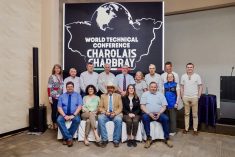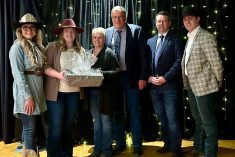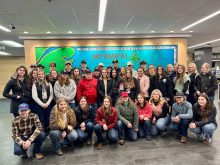If today’s profit comes at tomorrow’s expense, is there really a profit? I would suggest the answer is no. In our current society it is very easy to be focused on the short term and ignore the longer-term results of our management. If we want to have an ongoing vibrant industry it is essential that we plan for the future.
Holistic Management asks us to consider the results of our decisions in the short and long term. The question might be can I make a profit now and still give people the opportunity and privilege to farm or ranch 50 to 100 years from now? First Nations people talk in terms of our decisions influencing people who come after us for seven generations. I think this is true.
Read Also

Growing Canada’s beef herd: CCA’s priorities working with new federal government
This is my first column since the federal election. The Canadian Cattle Association works with all elected officials and parliamentarians, regardless…
Once you take the long-term view it becomes obvious that we must maintain and improve our land or there will be no long term. There are four basic processes in nature that we can work with: energy flow, water cycle, mineral cycle and succession. All four apply in cropping, grazing or haying situations.
Energy flow: At the most basic level agriculture is all about capturing free solar energy and converting it into a product we can market at a profit. The more solar energy we capture, the greater our profit potential, as long as we don’t increase our costs. In practical terms we want high plant densities, wide-leafed plants and as much diversity as possible.
In a cropping situation this will require us to grow multiple crops at one time. Multiple cropping increases the capture of solar energy because our growth will start earlier in the spring and continue later in the fall. Multiple cropping reduces crop disease, insect infestations and inputs as well as enhancing soil health.
In a grazing situation we need to focus on increasing plant density and diversity by stopping overgrazing and covering the bare ground. We need to have recovery periods (longer) that favour plant diversity, the more the better. Diversity would be having 20, 30 or more plant species present. Four or five would be considered low diversity.
In the case of haying we will again want to encourage plant diversity. Would it be possible to alternate grazing and haying? Could we vary the time of haying by early spring grazing?
Water cycle: Rainfall is the limiting factor in most of Western Canada. While we can’t increase our rainfall it is relatively easy to double our effective rainfall. This is the amount of moisture left for plant growth after runoff and evaporation. When the soil surface is covered by litter, runoff and subsequent evaporation are both reduced. When the soil is high in organic matter and porosity the water-holding capabilities are greatly increased.
Mineral cycle: A healthy mineral cycle depends on having a complex healthy mix of micro-organisms living in our soil. The complexity and inter-relationships in the soil are mind boggling. Suffice it to say that we need to build thatch and we need to feed and nourish all the organisms that live in the soil. In a cropping situation one way to do this is to use large animals to graze the crop residue. This grazing rapidly cycles the minerals for the next growing season. In a grazing situation allowing full recovery and grazing with a high stock density will help us have a healthy mineral cycle. In a haying situation the best thing we can do to aid the mineral cycle is to feed the bales where they were produced.
Succession: Succession is a naturally occurring process in nature. It basically means that things are interrelated. One plant prepares the way for the next. We can create what we want by co-operating with nature. One of the keys to understanding nature is to realize that what we see growing on our land is not good or bad. It is a symptom of previous management. When we want to move from where we are to where we want to be we need to change our management. We don’t need to eliminate the symptom.
The four ecosystem processes are linked. Strengthen one and you strengthen them all. I think that the key to short-term profit and long-term sustainability is to enhance soil health. When we do this we will create individual farms that are profitable and sustainable. When enough farms do this we will create a sustainable civilization. Remember, there have been over 20 civilizations that have failed when their agriculture failed. Our responsibility as producers goes far beyond growing crops or livestock. We are responsible for maintaining the health of the ecosystem which supports civilization. I believe this is a grave responsibility, one that we should willingly accept. We should be proud of who we are and what we do.
Let me end with a quote from THE GRAIN GROWERS GUIDE LIMITED 1921: “The soil must support the plant world which in turn supports the animal world, including mankind. Thus the food we eat, the clothes we wear and the timber that provides us shelter comes ultimately from the soil.”
“The soil therefore, is our greatest resource, the very foundation of life and prosperity.”
I know that all of us in agriculture have a certain respect for the land. I don’t think it is as great as our forefathers had. I suggest that we will be more successful as individuals and as a society when we develop a greater reverence and awe for the land.
I wish you good luck and success on your journey towards profit and sustainability.
Don Campbell ranches with his family at Meadow Lake, Sask. He can be reached at 306-236-6088
















